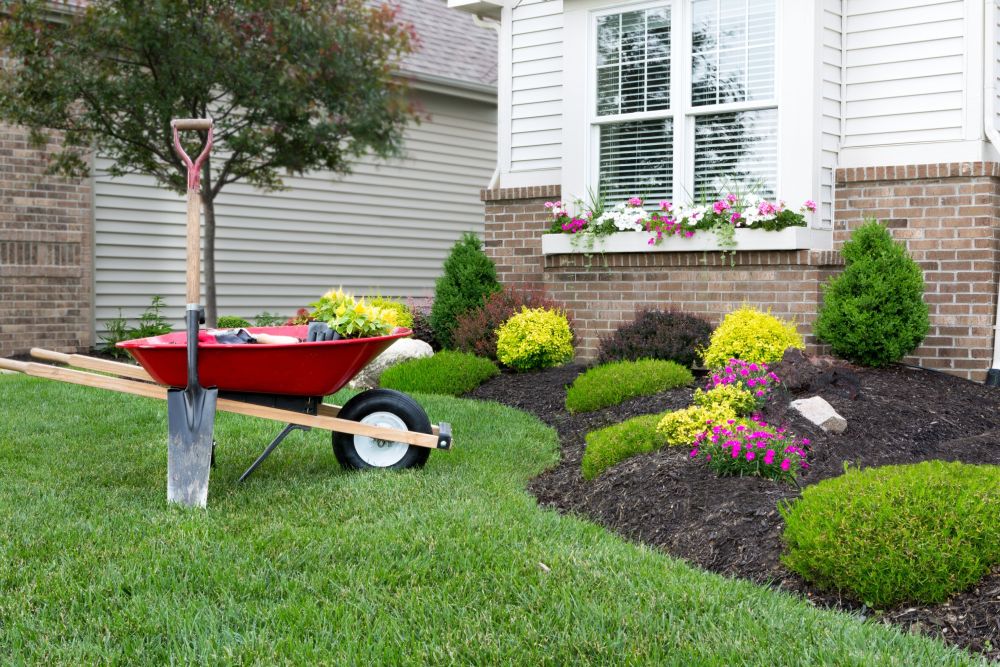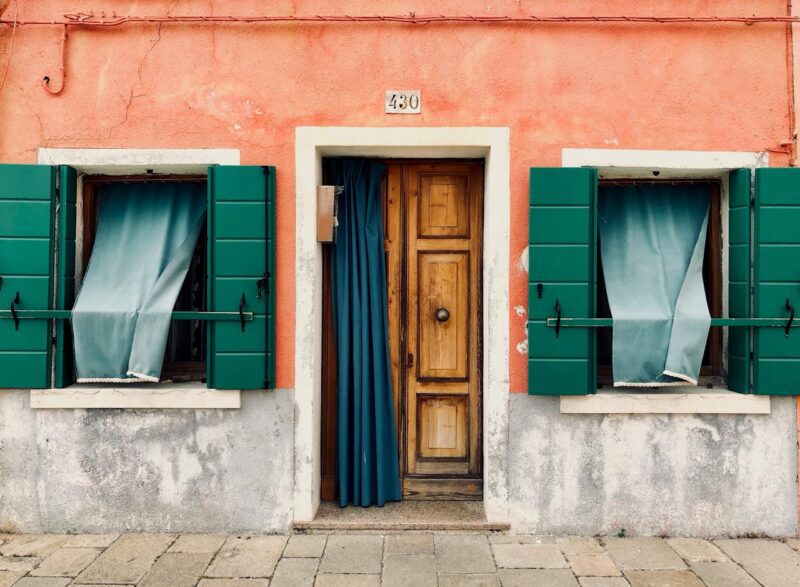
Share Post:
Imagine walking into a home that feels like a sunny getaway on the Mediterranean coast. The air feels lighter. The textures feel warm. Every corner gives off comfort and character. You do not need to live by the sea to bring that feeling home.
Small details can turn any space into a relaxed, coastal-style retreat. Warm colors, natural materials, and rustic finishes all work together to create a calm, inviting atmosphere. Thin brick walls, earthy tones, and arched doorways can instantly add a Mediterranean touch.
You do not need a full remodel. A few smart choices can bring that seaside charm right into your living room, kitchen, or patio. Here is how to design a home that feels like the Mediterranean coast—without leaving your address.
Table of Contents
ToggleThin Brick Walls That Add Texture and Warmth
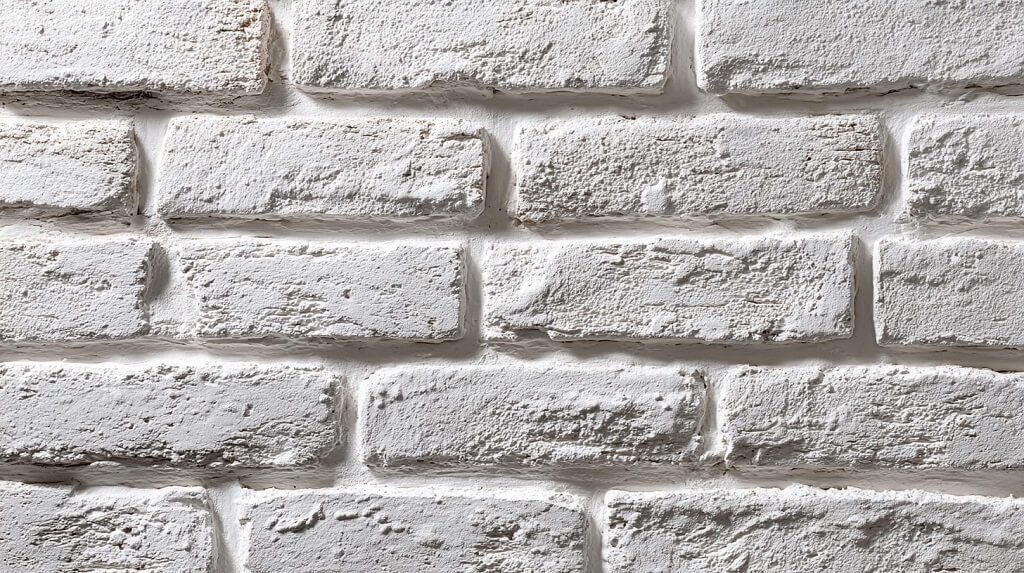
Thin brick offers the look of full brick without heavy construction. It brings Mediterranean charm into modern homes with ease.
Use Thin Brick for Accent Walls
Choose one feature wall in a kitchen, hallway, or patio. Thin brick creates a rustic feel without taking over the entire room.
Try Whitewashed or Terracotta Shades
Stick to colors that reflect old Mediterranean villages. Warm terracotta or soft white bricks capture the sun-soaked, coastal look.
Combine with Wood and Iron for Balance
Pair thin brick with exposed beams or wrought iron accents. This contrast strengthens the Mediterranean character in any space.
Earth-Tone Colors That Feel Like the Coast
Natural colors make a home feel sunlit and calm. They echo the sand, clay, sea, and stone of the Mediterranean coastline.
Choose Soft, Muted Hues
Use pale beige, olive green, mustard yellow, and dusty blue. These tones bring harmony and match well with natural textures.
Stick to a Three-Color Base
Limit the palette to three main colors. This keeps the look organized and avoids loud combinations.
Add Color with Tile or Fabric
Use brighter tones in small touches like cushions, curtains, or tiles. Keep large surfaces neutral to anchor the space.
Arched Shapes That Bring Old-World Elegance
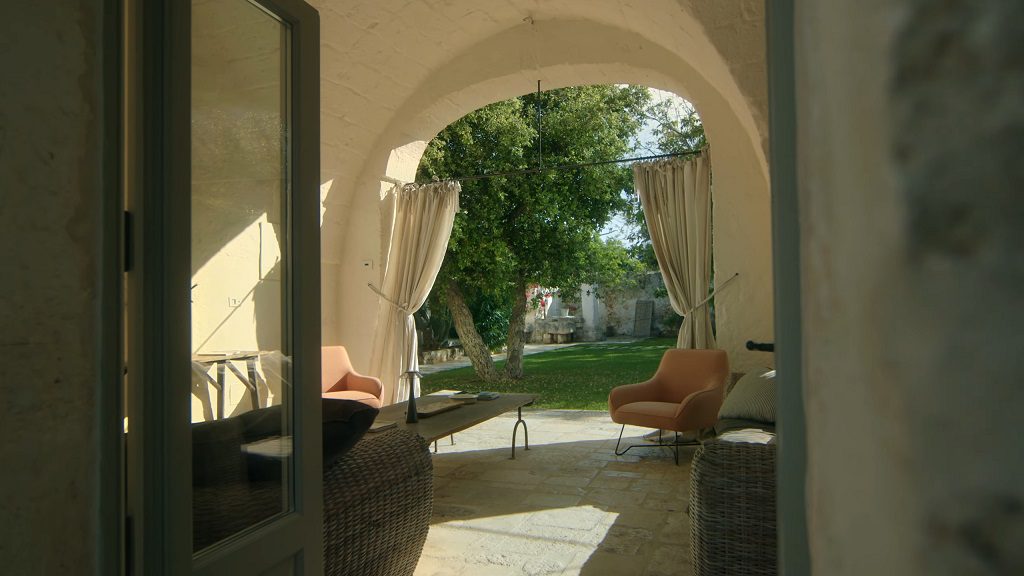
Arches are a key part of Mediterranean architecture. They soften rooms, guide the eye, and make every corner feel crafted.
Add Arches in Doorways or Windows
Install curved frames or trims around openings. Even one arched doorway adds instant character.
Use Arches in Furniture or Decor
Look for mirrors, shelves, or headboards with curved shapes. Small details still make a strong visual impact.
Keep the Edges Smooth and Natural
Avoid sharp angles and square trims. Round edges, soft curves, and natural lines stay true to coastal style.
Natural Materials That Ground Every Room
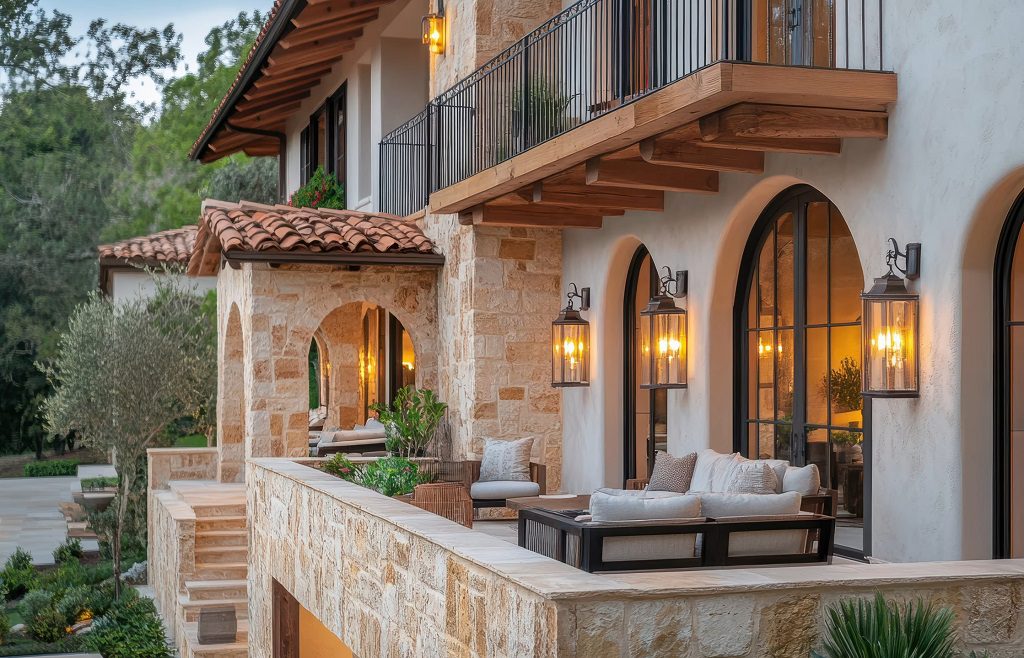
Natural materials bring a quiet strength into the home. They feel timeless and connect indoor spaces to the outdoors.
Choose Stone, Wood, and Clay
Use stone floors, wooden ceiling beams, or clay tiles. These materials echo the elements found along the Mediterranean coast.
Mix Rough and Smooth Surfaces
Blend polished wood with rough stone or matte plaster. Contrast in texture gives each room depth and interest.
Avoid Glossy or Artificial Finishes
Stay away from plastic or synthetic materials. Natural imperfections create warmth and personality.
Wrought Iron Details That Add Soul

Wrought iron brings a handmade touch to any corner. It feels strong, aged, and perfect for adding Mediterranean charm.
Use Iron for Light Fixtures and Railings
Wall lanterns, chandeliers, or stair railings in black or rusted iron add character with function.
Add Iron Furniture for Balance
Iron-framed coffee tables or bed frames pair well with soft linens and rustic wood.
Keep Designs Simple and Flowing
Choose patterns with curves or vines. Avoid sharp, modern designs. Flowing lines reflect traditional coastal craftsmanship.
Indoor and Outdoor Spaces That Feel Connected
Mediterranean homes feel open and breezy. The outside blends with the inside through smart layout and natural flow.
Use Large Doors or Arched Windows
Install wide doors or arched windows that lead to patios or balconies. Sunlight and air become part of the room.
Create Shaded Outdoor Sitting Areas
Use pergolas, tiled terraces, or vine-covered walls to build relaxing outdoor spots.
Decorate With Similar Materials Inside and Out
Carry the same tiles, furniture, or fabrics across both areas. This helps everything feel like one space.
Mediterranean Patterns That Tell a Story
View this post on Instagram
A post shared by Lifestyle Decorations | Decorative Tiles (@lifestyledecorations)
Colorful tile adds life and tradition to surfaces. It reflects history, art, and craftsmanship all at once.
Focus on Hand-Painted or Mosaic Styles
Look for tiles with blue, yellow, and earthy patterns. Moroccan and Spanish influences fit naturally.
Use Tiles for Small Surfaces
Frame a mirror, line a staircase, or tile a backsplash. Let the pattern shine without covering the whole room.
Keep the Rest of the Room Simple
Balance bold tile with quiet surroundings. Plain walls and soft textures help the design breathe.
Ceilings and Walls That Feel Rustic
Mediterranean interiors often use plaster, stucco, or limewash to add character to walls and ceilings.
Apply a Textured Finish to Walls
Skip flat paint. Use stucco or plaster for a sun-dried, earthy surface that feels handmade.
Add Exposed Beams to Ceilings
Use reclaimed wood beams to add strength and age. Even faux beams can make a strong visual impact.
Stick to Soft, Matte Paints
Avoid glossy coatings. Stick to natural tones and finishes to keep the atmosphere calm and cozy.
Garden Touches That Bring the Coast Home
Plants and garden details complete the Mediterranean mood. Scents, shapes, and textures turn a yard into a seaside escape.
Grow Drought-Friendly Plants
Use lavender, rosemary, thyme, olive trees, or cypress. These plants look right and require little care.
Use Clay Pots and Stone Paths
Terracotta pots, stone walkways, and gravel beds fit perfectly into the landscape.
Add a Water Feature or Wall Fountain
Even a small trickle of water can make a patio or courtyard feel calm and luxurious.
FAQs
What flooring fits a Mediterranean home best?
Use terracotta tiles, stone slabs, or natural wood. These options feel solid, warm, and rustic. Stay away from carpet or shiny surfaces.
What colors should I avoid in Mediterranean design?
Avoid bright neons, cool grays, and sharp black-white contrasts. Stick to soft earth tones, warm neutrals, and sea-inspired blues. The goal is comfort, not sharpness.
Can I use modern appliances and still keep the Mediterranean style?
Yes, but blend them into the space. Choose appliances in neutral colors and surround them with natural textures. Hide them with wood panels if possible.
What kind of art works well in a Mediterranean-style home?
Choose paintings or prints that show landscapes, pottery, or old architecture. Earth-tone frames or wrought iron holders work well. Avoid abstract or high-gloss pieces.
How do I decorate small spaces with this style?
Use light colors, arched shapes, and mirrors to open up the space. Add small accents like a clay vase or patterned pillow. Keep furniture minimal and natural.
The Bottom Line
A Mediterranean-style home feels warm, lived-in, and peaceful. It does not rely on trends or flashy materials. Instead, it uses texture, color, and natural elements to create comfort that lasts.
You do not need a full remodel to bring this look into your space. Start with small touches like thin brick, warm lighting, or a few clay pots. Layer in soft colors, curved lines, and natural finishes.
Each choice adds depth and charm. Each material tells a quiet story. A home inspired by the Mediterranean coast does not try too hard—it simply feels right.

